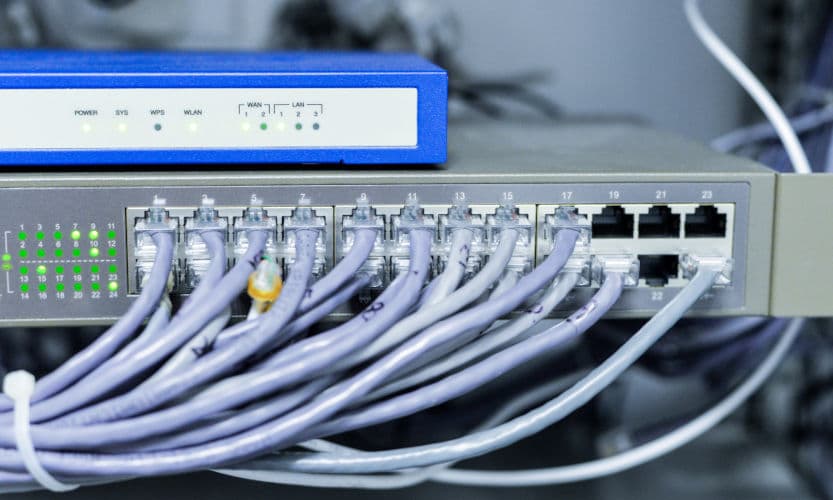Whether in a multi-storey commercial building or a single-family home, all devices in the area are connected to each other. How is this possible? Thanks to the Local Area Network (LAN). Datascientest explains everything you need to know about the LAN.
What is Local Area Network LAN?
LAN stands for Local Area Network. In concrete terms, it’s a computer network where all the terminals are in the same place. For example, all the computers, printers, cables, access points, switches, routers, etc. located within a building.
The idea is to connect devices located in a single, limited area. This facilitates communication between network nodes and resource sharing. And that’s regardless of the size of the area covered.
So LANs work just as well for a home network with two or three users as they do for a corporate network with thousands of employees. In fact, on a corporate scale, LANs are also known as enterprise LANs.
LANs were developed in the 1960s for colleges, universities and research centers. The idea was to facilitate connections between computers in these educational facilities. But with the development of Ethernet technology (in 1973), LANs became widespread: in businesses, restaurants, cafés…
Good to know: LANs are distinct from wide area networks (WANs) or metropolitan area networks (MANs), which cover much larger geographical areas. However, WANs and MANs can also link several LANs together.

How does LAN work?
Wired or wireless LAN
Originally, the LAN consisted solely of a group of computers and peripherals sharing a common communication line (thanks to Ethernet). Later, the development of Wi-Fi facilitated wireless links with a server (known as WLAN). Businesses and home users can now choose between wired and wireless LANs. But generally speaking, a wireless LAN is preferable to a wired LAN connection, since there’s no need to install cabling throughout a building. This makes the wireless version much more flexible and economical.
LAN networks of any kind need the following components to function:
- switches ;
- routers (only for large LANs, to rationalize traffic flows) ;
- Ethernet cables, which serve as a shared medium for the various devices (only for wired networks).
This is the configuration that connects terminals, servers and other devices to the corporate or home network.
Virtual LANs
In companies with several hundred or even several thousand employees, the LAN must be capable of connecting thousands of devices.
But if too many devices are connected to a single LAN, the volume of traffic can create congestion and bottlenecks.
The classic LAN configuration with Ethernet/Wifi and switches then seems insufficient. Instead, it’s best to divide up the volume of broadcast traffic. This is where virtual local area networks (VLANs) come into play. In this way, traffic is distributed across multiple VLANs, without the need for major changes to the IT infrastructure.
VLANs are widely used in companies, especially those with different departments (accounting, marketing, IT, finance, etc.) spread over several floors or large areas. With VLAN, all devices are connected to the same switch to facilitate collaboration between teams. At the same time, networks are segmented so that each employee can adapt their use to their specific needs.
Most corporate networks are divided into hundreds of VLANs to limit broadcast overload and performance problems.
What are the advantages of LAN?
The main advantage of LANs is to facilitate connection between devices. Whatever they may be. PCs, printers, telephones, TVs, speakers, lighting, thermostats, blinds and even coffee makers can all be connected. Network users can share files securely, print documents or control room temperature.
In addition to these everyday uses, here are the benefits of LAN technologies for businesses:
- Data storage in a centralized location;
- Sharing a single Internet connection between several LAN devices;
- Protection of connected devices thanks to network security tools.

Things to remember :
- LAN is the network that connects all devices located within a limited geographical area.
LANs can be wired (using Ethernet) or wireless (using WiFi). - But when there are several hundred workstations to connect, these configurations prove insufficient. That’s why companies also use virtual local area networks (VLANs).










